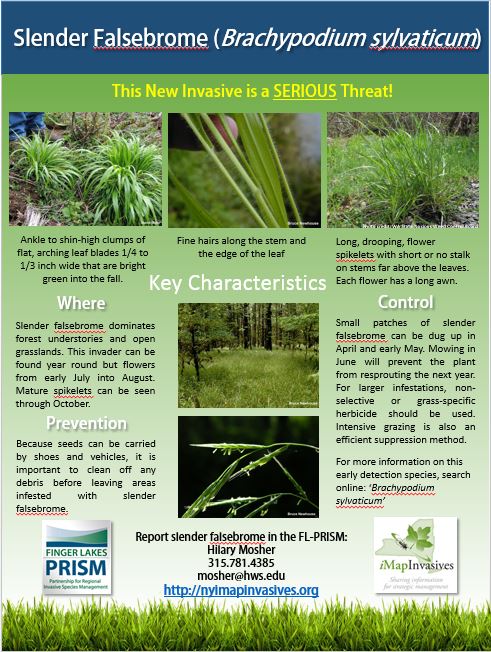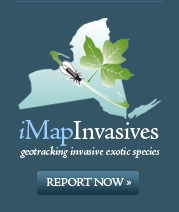Slender Falsebrome

Common Name: Slender Falsebrome
Scientific Name: Brachypodium sylvaticum
Origin: Europe, Asia, North Africa
Description
Weldy & Werier (2009): “A native of Eurasia and north Africa, this species is sometimes sold as an ornamental grass. It has the potential to become highly
invasive and therefore should not be planted. A large infestation discovered by Steven Daniel in 2009 in Genesee County is the first report from New York. Bergen Swamp stewards observed this plant at this location since at least the late 1990s, but did not know what it was or that it was a potentially new invasive plant for the region. A second population was discovered in Tompkins County (approximately 85 miles from the Genesee County population) also in 2009. Therefore, this invasive species is probably widespread in at least western and central New York and has likely been overlooked.” Sources of information:
Weldy & Werier, 2009.
Habitat
Freshwater marshes, forested wetlands and riparian areas, ditches, grassland and old fields, forests and woodlands, and roadsides.
Threat
Slender falsebrome causes major alteration in community composition, including the extirpation of native species. Kaye (2003) reports that the palatability of this grass for wildlife is “very low.” In many areas monocultures of this species displaces species that are more palatable to wildlife.
Distribution: View Map

